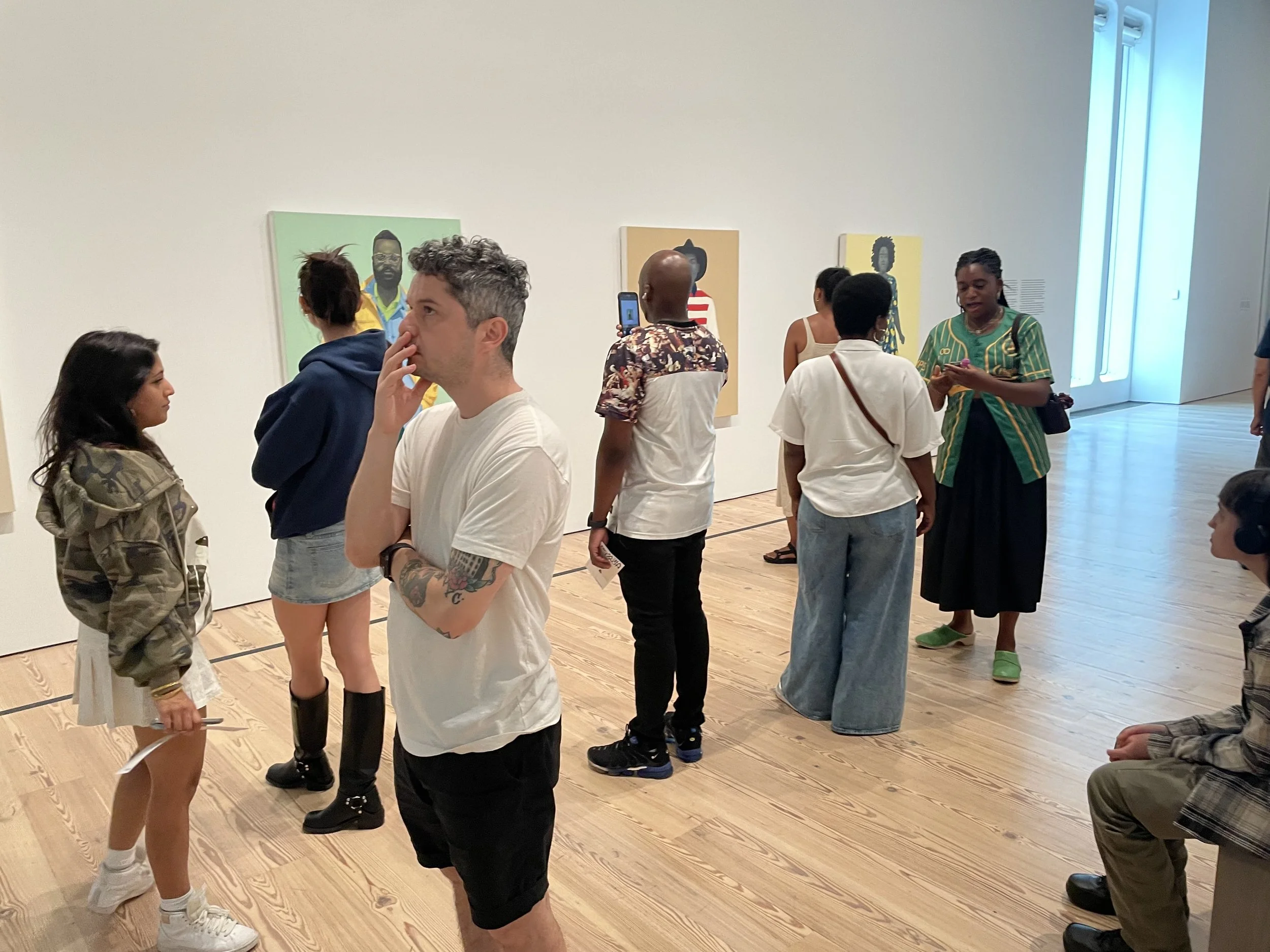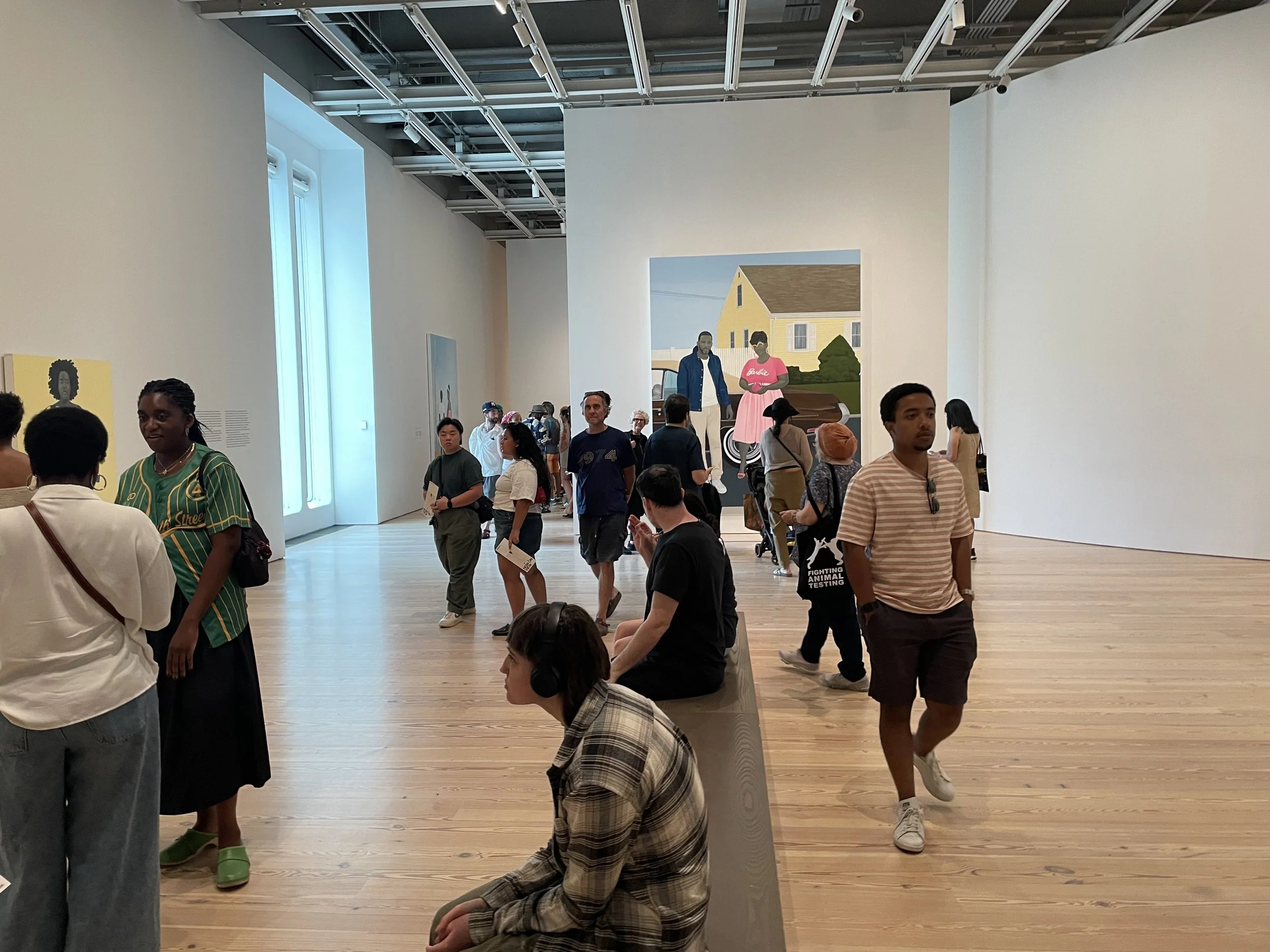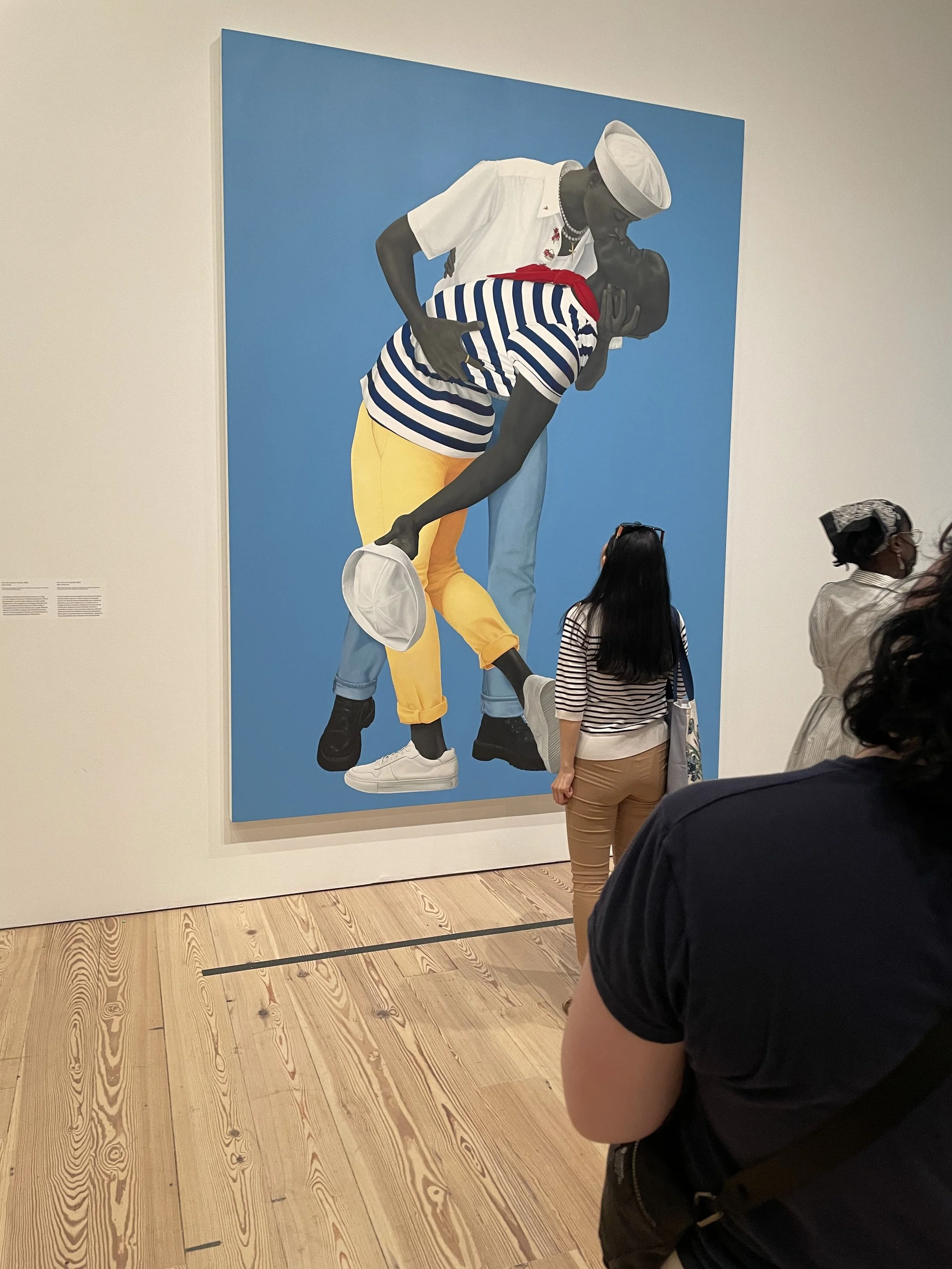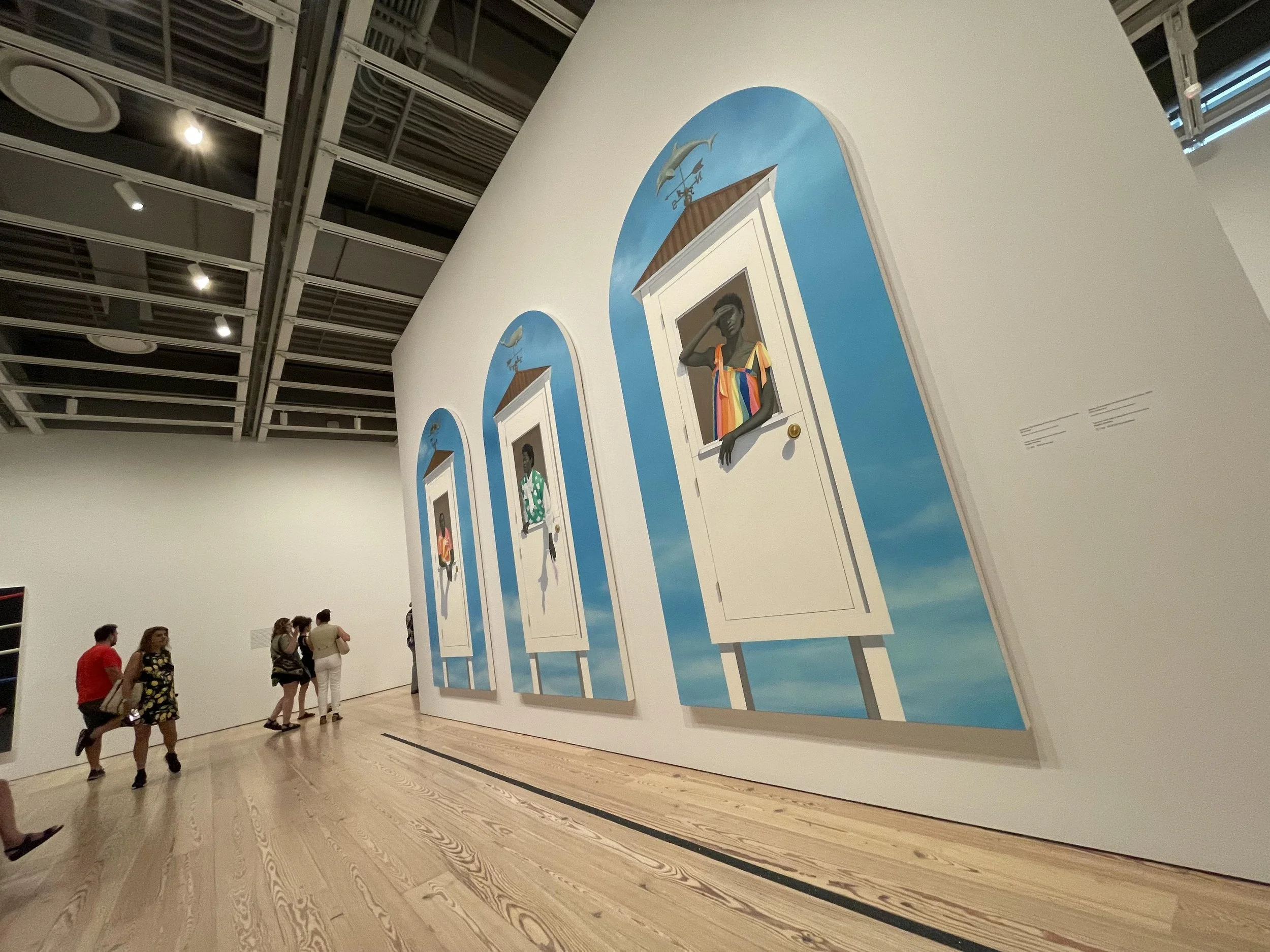Amy Sherald: American Sublime — Last Glimpses, Living Presence
On August 10, 2025, we arrived at the Whitney among the final visitors for the last day of Amy Sherald's American Sublime Exhibition. Free to enter on Fridays and every second Sunday, this museum has become a haven for us. Bleucalf, along with Collectives, ARCHIV3, SxNoir, and All My Friends Are Artists, were there with our spirits lifted by one simple yet profound truth: seeing another Black woman command that space set us free and filled us with hope. It was a silent, loud announcement: This exhibition is open to all who choose to walk through its doors.
In a soberly beautiful way, Sherald's portraiture creates a fresh opening into Black life. Instead of dwelling on strife, she finds everyday moments of reverence. Working-class individuals, commonplace scenes, and the First Lady herself-each presence is an affirmation, equal and whole. This clarity was cemented in the argument by the gray skin, shifting the dialogue away from the topic of color to notions of shape, posture, and attitude. The viewer comes closer, not to pity but to recognize: this life, this person, is.




Amy Sherald’s portrait of Breonna Taylor declares visibility and stands against erasure. Taylor is not locked into the frozen frame of martyrdom or sculpted into the spectacle of her death; she is rendered whole, alive in presence and spirit. In her lovely blue dress, calm authority drapes over her like a halo of graciousness which, by the very fact of its existence, contradicts the violence that had taken away her life. Her unflinching gaze meets the viewer incarnate with this unshakable knowing: I am being looked at on my own terms. Sherald gave Breonna back to herself, and to us—as more than a symbol; she becomes a Black woman whose dignity cannot be tarnished, whose beauty and humanity serve as an unyielding reproach to the brutality that tried to extinguish her.
“Breonna Taylor” By Amy Sherald
“Trayvon Martin” By Amy Sherald
The portrayal of the young Trayvon Martin is more than just a painting; it claims a place in cultural defiance and ancestral respect. Through her brush, Trayvon is wrested from the dehumanizing gaze of the media and the state, restored to the sacredness of being a young Black boy with dreams, joy, and a future that was stolen. Sherald paints his blackness in an intriguing grayscale that rejects this voyeuristic hunger for Black suffering and instead places him into a special realm where his existence is unquestioned, beyond stereotype, and erasure. Hooding, once weaponized to dehumanize, is rendered sanctified by Sherald: a garment of truth and protection. Therefore, through Trayvon, Sherald makes his immurement in the continuum of Black portraiture that refuses to give him invisibility, insisting to the whole world that Black lives are mourned, remembered, honored, and forever seen.
Then, “Trans Forming Liberty”, a ten-foot painting of Arewà Basit as Lady Liberty, Basit being a trans non-binary artist. There are flowers in one hand and a torch in the other; her pose is grounded and proud. When the Smithsonian considered excluding the painting in order to avoid making political waves, Sherald refused to stay quiet. Sherald chose to pull the entire show rather than let its meaning be diluted.
That act of refusal matters. It reminds us that erasing or softening this image—a re-vision of a cherished national symbol—is itself a kind of erasure. Sherald refused the erasure. Instead, the painting broke through. It became the cover of The New Yorker, uncontained by walls or curators.
“Trans Forming Liberty” By Amy Sherald
Small Encounters and Quiet Reckonings
For us, from the Collectives' standpoint, we felt the layers of what Sherald was doing. For someone who looks like us to be shown as completely whole and unashamed, this is a claim. As we walked through those galleries, we said nothing, and our acceptance grew: yes, acceptance is possible; yes, our stories belong in these silent rooms and on these walls.
My thoughts went to Sherald’s other subjects: nondescript people in bright clothes, fishermen, neighbors, or simply unknowns. Each remains silent yet eloquent, a reminder that Black life is not one story. It is manifold, unwritten, and begs to be painted.
When Art Becomes Refuge
Sherald's singular stand against censorship whispers that courage isn't always loud. Sometimes absence can speak more powerfully than presence. With Sherald, absence becomes the message. In those galleries, every brushstroke felt like a seed. Art isn't just the art that's hung; it's the art that is carried forward. American Sublime will exist in how we imagine more inclusive portraiture, more gendered liberty, and more unfiltered humanity.
Final Reflection
That last day walking out with my group, more came with me than just the images in my mind. I carried conviction. Sherald let everyday grace speak for itself and then refused to have that grace censored. It reminded me that our presence is unapologetic and not confined to moments when others choose to see us. This in itself is resistance. We belong. And with her images, Sherald welcomes us in, whole and seen.













